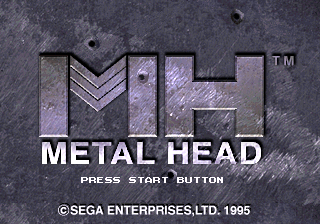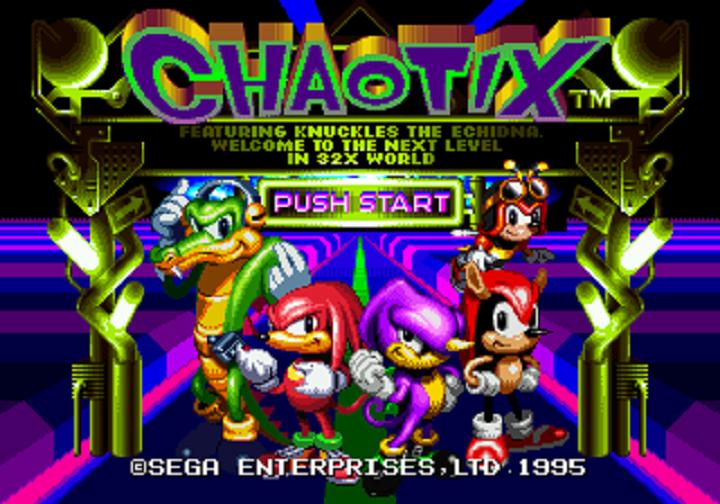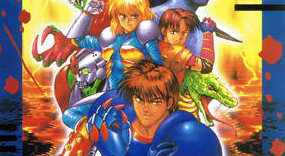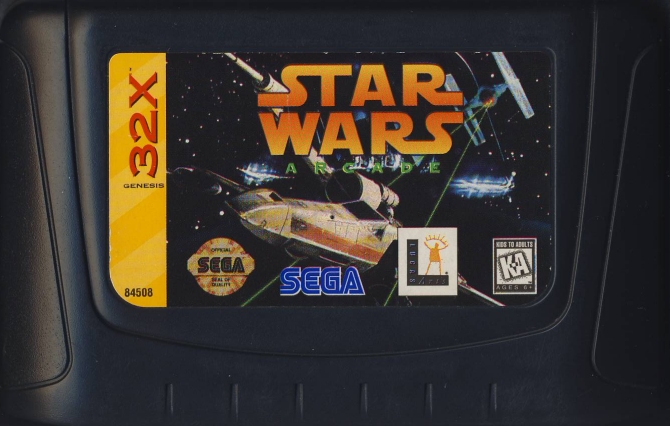Apologies for the day delay. Blame Hurricane Sandy, the Nintendo Wii U and Mitt Romney. In any case, here is your weekly dose of My Life With SEGA. This week, A.J. starts off 32X month by doing a very special hardware review, followed by a classic episode in which A.J. takes on T-Mek for the, you guessed it, 32X.
Oh yeah, ladies and germs; I’m reviewing the 32X. Not just a game, but the hardware itself. 18 years ago this month, Sega unleashed their 32-bit peripheral upon the American public. While it’s earnings were initially strong, it soon crashed harder than the Hindenburg….
How? Why? Well, here’s my take.
After the break: T-Mek!
We’re kicking off 32X month with a “classic” episode, where I review one of my guilty pleasures; T-Mek. A post-apocalyptic hover-tank combat game from the early 90’s, this just so happens to be one of the more obscure – not to mention expensive – titles for Sega’s under appreciated add-on. Join me as I pop the hood in search of hidden value and loose change.
Like this video? Subscribe to the SEGAbits YouTube channel!
Ad:





Interesting how much the Sega 32X ‘console’ looks like a cross between the Mega Drive and the Saturn, except with carts instead of CDs.
If it had been released as Sega’s next full on console rather than an add on, to make way for a CD based console which became the Saturn, Sega’s fortunes might have been better off now and they’d still be a major player in the industry.
Must of all come done to bad timing and Sega unsure of which way to go at the time, first people thought they were finally going CD with the Sega Mega CD add on, but then they went back to cartridges with the 32X and then back onto CD’s again with the Sega Saturn.
And that’s all before Sega was even sure of 3D being the next big thing rather than a Hi-res 2D console, which led to Sega being surprised that 3D was what the competition was going to use, and left them little time to get the Saturn capable enough, and though it made the Saturn more powerful than the Playstation technically, it made it so difficult to get this power made to good use because of the double processors.
I agree. In retrospect, 32X should not have been released. Between the Genesis, Sega CD and Game Gear, Sega spread themselves far too thin trying to dominate the market. It should have been one or the other, I feel.
As much as I love the Saturn – probably my favorite Sega console – it had it’s own share of problems. In addition to the issues you mentioned above, using quadrilaterals to render three-dimensional shapes was ridiculous. It’s like, why? Besides CD-i – or was it 3DO? – no one used quadrilaterals; the used triangles. This made porting 3D titles a tremendous pain in the ass.
Oh, hindsight. Hehe.
The reason for Sega’s seemingly unsure route taken in those days was because of the drama and in-office politics between Sega of America and Sega of Japan. The cancelled Sonic Extreme is a very clear example of east vs west.
I think it was Sega of America that really pushed the 32X when Sega of Japan was considering abandoning the project. One of SoA’s key members convinced Sega’s president to go forth.
Yu Sazuki knew that 3D was the next big thing as the Virtua series was well underway and already in arcades. In fact Sega made the first 3D fighter and perfected 3D racing, so Sega must of had an idea that 3D was going to be the future. I just don’t think they realized it was expanding outside of arcades and into people’s homes so quickly.
Oh and AJ, there was an advantage to using quadrilaterals. It provided much greater video memory compared to triangles which was great for 2D game engines, and since Sega was planning on the Saturn to be a 2D powerhouse with subtle 3D effects, this is why they chose quadrilaterals, I assume. By the time the heard of the Playstation, it was probably to late to change the entire structure of the Saturn and instead they just threw in some more processors to try and make it more capable for 3D.
Actually I am not sure if I am 100 percent right on quadrilaterals providing greater video memory, but I do know that quadrilaterals had a great advantage with 2D game engines, regardless.
@SlothMachines – Quadrilaterals may have given them a technological advantage, sure. But what good is all that technology when only a handful of people know how to use it properly? That, in conjunction with it’s unusual chip set, made the Saturn a very difficult machine to code for.
Yeah, definitely a good point. Sega was in panic mode at that point and it shows with the Saturn’s confusing hardware and the shroom’s messy stumble into the console race. It’s a beautiful mess. Even Yu Sazuki, probably the biggest key developer at Sega knocked the Saturn for it’s difficulty saying something along the lines of there being only a handful of devs in the world that were experienced enough to use the Saturn’s potential.
But damn the man knew his shit. Those Shenmue demos running on Saturn hardware in realtime still look incredible. Check em out on YouTube if you haven’t already. and VF2 is still the best looking Saturn game.
Thankfully Sega totally got everything right and in line with the Dreamcast so I could have a personal high note for my favorite game company. Solid launch, great first party support, seamless online multiplayer, and an overal high quality next-gen experience. Too bad Sony had them by the balls at that point. Damn…the Dreamcast was awesome, screw the PS2.